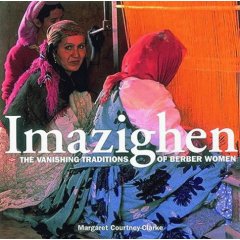1902 Encyclopedia > Africa > The Berbers
Africa
(Part 17)
(G) AFRICA - ETHNOLOGY (cont.)
(e) The Berbers
"All that is not Arabic in the kingdom of Marocco [Morocco]," says Dr Latham, "all that is not Arabic in the French provinces of Algeria, and all that is not Arabic in Tunis, Tripoli, and Fezzan, is Berber. The language, also, of the ancient Cyrenaica, indeed the whole country bordering the Mediterranean, between Tripoli and Egypt, is Berber. The extinct language of the Canary Isles was Berber; and, finally, the language of the Sahara is Berber. The Berber languages, in their present geographical localities, are essentially inland languages. As a general rule, the Arabic is the language for the whole of the sea-coast from the Delta of the Nile to the Straits of Gibraltar, and from the Straits of Gibraltar to the mouth of the Senegal." The Berber nation is one of great antiquity, and from the times of the earliest history has been spread over the same extent of country as at present; the ancient Numidian and Mauritanian names of Sallust, and other writers, have a meaning in the modern Berber. It has affinities with the Semitic languages. In the northern parts of Atlas these people are called Berbers; in the southern tracts they are the Shuluh or Shelhas. In the hilly country belonging to Tunis, the Kabyles; in Mount Auress, the Showiah; and in the Desert, the Tuarick, -- all belong to the same group. The mountains of Atlas are said to be inhabited by more than twenty different tribes, carrying on perpetual warfare against each other. They are very poor, and make plundering excursions in quest of the means of supporting life. They are described as an athletic strong-featured people, accustomed to hardships and fatigue. Their only covering is a woolen garment without sleeves, fastened round the waist by a belt.
Read the rest of this article:
Africa - Table of Contents
Recommended Resources
Imazighen: The Vanishing Traditions of Berber Women
Text by Geraldine Brooks. Photos by Marguerite Courtney-Clarke.

"The final volume in a trilogy celebrating the extraordinary traditional arts and crafts of African women. Photographer Courtney-Clarke traveled through the rugged mountains and deserts of North Africa to record the distinctive pottery, fabrics, rugs and other woven products, and murals created by Berber women. Journalist Geraldine Brooks contributes a narrative stressing the harsh lives most Berber women face and their remarkable resilience and love of color and craft. The 230 color photographs have a startling intimacy and vigor, portraying intricate designs on house walls and pottery; complex, serene, sophisticated patterns for rugs and fabrics; and the women themselves, weaving, working at kilns, tending families, or pausing for portraits."
Click here to learn more details or to buy this book
|
